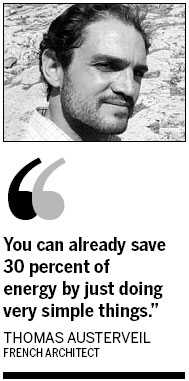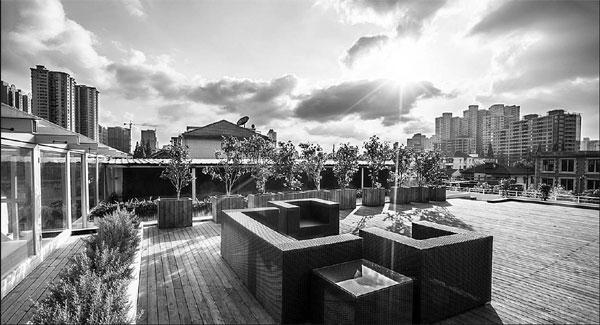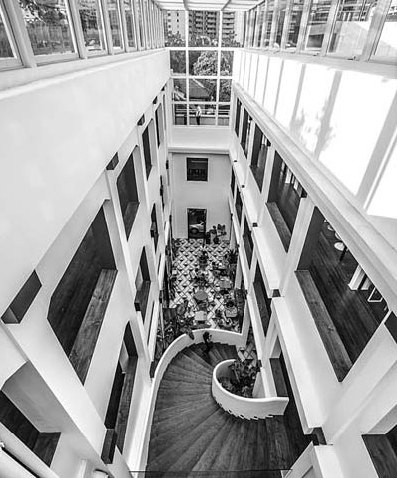Greening the brownfields
Updated: 2013-09-01 08:09
By Shi Jing(China Daily)
|
|||||||||
|
French architect Thomas Austerveil believes more Chinese are slowing down and enjoying strolls in cities' nicer areas, which inspires him to introduce public spaces in his works. Photos provided to China Daily |
A French architect demonstrates the sustainability of redeveloping, rather than replacing, China's existing structures. Shi Jing reports in Shanghai.
China is discovering brownfields can be green, and some think they'll become the new black for the country's urban planning.
It's a rethinking of redevelopment that could prove crucial to its breakneck urbanization.
As China's galloping economy slows to a stride, experts are realizing the economic and environmental benefits of extending existing buildings' use by up to 20 years rather than destroying them and building hundreds of new towers in their place.
This is what French architect Thomas Austerveil says he has learned over two and a half years of dealing with Chinese customers.
A specimen of his vision is the Jing'an Design Center, tucked in a quiet corner of downtown Shanghai.
The four-story loft was sired by the renovation of two factory buildings.

The original windows were enlarged. Wooden spiral staircases were installed. A black-and-white color scheme was introduced. And vegetation, terraces and public spaces were infused into the structures.
Austerveil believes constructing sustainable buildings can be expensive and requires much advance planning. So simple tweaks can easily and cheaply increase sustainability.
Jing'an Design Center's windows were enlarged but in such a way as to avoid sunlight from streaming in directly, for example.
Austerveil connected the two buildings with an atrium. It traps sunlight to keep the buildings 10 degrees warmer in the winter, reducing heating and lighting needs.
"You can already save 30 percent of energy by just doing very simple things," Austerveil says.
Austerveil teaches a course on low-tech sustainability at Tongji University.
This kind of sustainability costs no more than a regular building, he says.
"In that aspect, there is an interest, as soon as you say it's the same amount of money you need to design from the very beginning."
He has also noticed the central government is pushing such large sustainable projects as wind farms, solar fields and water treatment facilities.
"In China, when the government decides to do something, it proceeds very quickly," he says.
Austerveil has noticed problems with what he calls "China speed", in which high rises are built after a short decision-making period and are run down in five to 10 years.
"In Europe, especially the Germans, (people) try to build for like 60 years," he says.
"In France we try to build for 35 years, which is already very difficult. If you build with a little bit of quality, it lasts for a much longer time, which goes back to the story of this place (Jing'an Design Center)."
It took his team four and a half months to complete the center's design and renovation.
"That was very fast. In Europe, it would take four years."
Austerveil believes more Chinese are slowing down and enjoying strolls in cities' nicer areas. That's why he introduces public areas in his works. He cites the Jing'an Design Center's rooftop vegetable garden as his favorite.
"When people go up and take care of the vegetables they grow, they can meet new people," he explains.
"Nice international cities always have places where people can take a walk and discover."
Austerveil grew up next to Paris' Chinatown. He recalls enjoying listening to music and watching people doing all sorts of things in the area.
He arrived Shanghai in 1997, as a Cornell University student.
"I was in London, New York and Paris. Shanghai is all the same but different, a bustling metropolis," he says.
"You can meet many different people here, and all different kinds of food and bars. It's a fun place to live."
Contact the writer at shijing@chinadaily.com.cn.
|
Jing'an Design Center, renovated from two old factory buildings, is a specimen of Austerveil's vision of redeveloping existing buildings' use in China. |
(China Daily 09/01/2013 page5)

